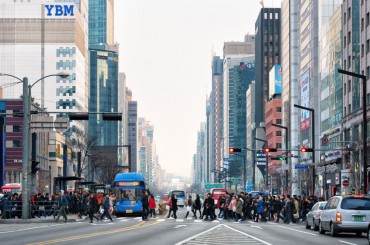
Korea Hydro & Nuclear Power (KHNP) said there were no disruptions to nuclear power plant operations following the Gyeongju earthquake on November 30. (Image courtesy of KHNP)
GYEONGJU, Dec. 1 (Korea Bizwire) – The city of Gyeongju, located in North Gyeongsang Province, experienced a significant 5.8-magnitude earthquake in September 2016, marking the largest recorded earthquake in South Korea. More recently, in the early morning of November 30, another earthquake struck the region, leading to heightened concerns among citizens.
According to reports from the Daegu Meteorological Administration and the Gyeongbuk National Police Agency, a 4.0-magnitude earthquake occurred at 4:55 a.m. in the vicinity of the village of Ipcheon-ri, about 19 kilometers southeast of Gyeongju.
Against this backdrop, serious allegations have surfaced, suggesting that thousands of inadequately qualified anchor bolts, incapable of withstanding external shock loads such as those generated by earthquakes, were utilized in the containment buildings of units 1 through 4 at the Wolseong Nuclear Power Plant in Gyeongju, prompting further concerns.
Lawmaker Kim Sung-hwan from the Democratic Party of Korea, along with others, convened an emergency press conference at the National Assembly’s communication center. They disclosed that an unnamed nuclear safety official had reported the status of inappropriate machinery at 14 of the country’s oldest nuclear power plants, including Wolseong.
Anchor screws play a crucial role in securing equipment and facilities to concrete walls within nuclear power plants. According to Kim’s report, in the containment building of the Wolseong Nuclear Power Plant’s reactor 3, only 21 out of the 353 devices fixed to the wall were equipped with earthquake-resistant set screws. Considering the usage of two to eight set screws for each device, it is estimated that over 1,000 non-seismic set screws were utilized for each reactor and more than 4,000 for Wolseong reactors 1 to 4.
Kim emphasized the significance of the containment building as the ‘last line of defense’ against radioactive material leakage. He expressed concerns that the use of non-seismic fasteners could lead to facilities shifting during an earthquake, causing internal cracks and damaging the pressure boundary. The informant has reportedly been advocating for corrective measures against low-strength non-seismic fasteners for years.
Kim asserted that the Democratic Party would investigate whether the Nuclear Safety Act had been violated and take necessary actions. In response, the Nuclear Safety Commission stated in a press release that the issue was raised in 2017, when a Canadian regulator that applies relevant technical standards confirmed the permissibility of non-seismic anchors and subsequently conducted a seismic performance evaluation of the non-seismic anchors at the Wolseong Nuclear Power Plant, affirming their compliance with design requirements.
Meanwhile, Korea Hydro & Nuclear Power (KHNP) said there were no disruptions to nuclear power plant operations following the Gyeongju earthquake on November 30.
“All nuclear power plants across the country are operating safely without any impact from the earthquake,” KHNP said.
Kevin Lee (kevinlee@koreabizwire.com)






